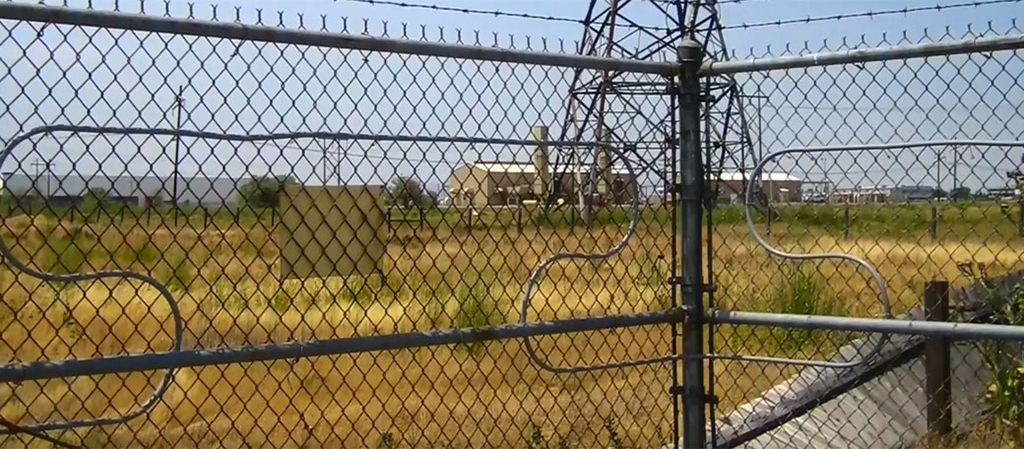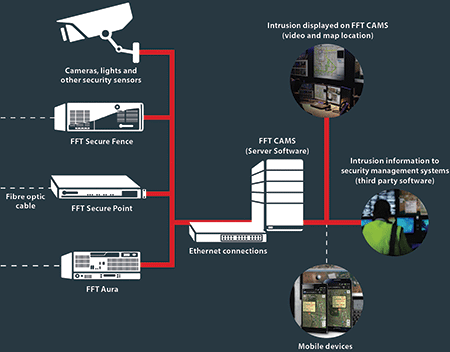A Comprehensive Guide to Fiber Optics Infrastructure for Security Installations
A Comprehensive Guide to Fiber Optics Infrastructure for Security Installations
Blog Article
Enhance Your Safety And Security With Advanced Fiber Optic Safety And Security Systems
In an era where safety is extremely important, innovative fiber optic protection systems provide a compelling option for enhancing security throughout various atmospheres. These systems not just flaunt superior data transfer and rate for high-resolution surveillance however likewise supply remarkable durability versus exterior disturbances. As organizations significantly look for reputable means to protect their possessions, the combination of cutting-edge technologies like AI and IoT within fiber optic frameworks increases necessary inquiries concerning their efficiency compared to conventional systems. What ramifications do these advancements hold for future protection measures?
Benefits of Fiber Optic Safety And Security
Taking advantage of the benefits of fiber optic innovation substantially improves safety and security systems across various applications. Among the key advantages is the boosted data transfer ability, enabling the transmission of big quantities of information at broadband. This is especially vital for real-time video surveillance, where high-resolution feeds can be sent out without latency, making certain instant reaction capabilities.
In addition, fiber optics show superior resistance to electromagnetic interference, which is crucial in atmospheres with possible signal disturbances. This integrity makes certain constant efficiency in important safety procedures. In addition, fiber optic wires are much less vulnerable to touching and unauthorized gain access to compared to traditional copper electrical wiring, therefore boosting data integrity and privacy.
One more notable advantage is the resilience of fiber optic systems; they are extra immune to ecological elements such as wetness, temperature changes, and harsh compounds. This resilience translates to reduce maintenance prices and longer life expectancies for safety setups.
Finally, the light-weight nature of fiber optic cable televisions assists in easier installation and routing, especially in intricate frameworks (fiber optic security system). Inevitably, the assimilation of fiber optic technology into safety and security systems not just strengthens security steps but also enhances functional efficiency
Key Functions to Think About
When reviewing fiber optic safety systems, numerous crucial attributes should be thought about to ensure optimum efficiency and effectiveness. Initially, examine the system's detection array and level of sensitivity; an extensive array allows for checking large locations, while high sensitivity guarantees that even minor disruptions are identified quickly.
Following, think about the integration capabilities of the system. A fiber optic safety and security system need to effortlessly interface with existing safety procedures such as electronic cameras and alarm systems, producing a cohesive safety network.
Toughness and environmental resistance are additionally essential features. Make sure that the system is designed to hold up against harsh weather and prospective physical hazards, as this will certainly lengthen its functional lifespan.

Lastly, check out the scalability of the system. A durable fiber optic protection system ought to be easily expandable to suit future requirements without significant overhauls. By thoroughly thinking about these functions, you can select a fiber optic safety remedy that improves security and protection in your setting.
Setup Process Overview
To effectively execute a fiber optic security system, a methodical setup procedure is essential. published here This process begins with a thorough site assessment to determine the certain protection requirements and to determine ideal places for fiber webpage optic cable televisions and protection devices. Following this assessment, the installment group will certainly develop a comprehensive strategy, consisting of cable television paths, needed devices, and conformity with regional regulations.
Following, the installment involves laying the fiber optic wires, ensuring they are protected from environmental factors and physical damage. Correct handling techniques are vital, as fiber optic wires are sensitive and can be quickly harmed. After the cabling is installed, adapters and discontinuations are thoroughly finished to guarantee signal honesty.
The subsequent phase contains installing protection devices such as electronic cameras, movement detectors, and security system, all incorporated with the fiber optic network. Extensive testing is performed to validate that all parts are functioning properly and to guarantee optimum performance.

Contrasting Fiber Optic to Standard Systems
The advancement of protection technology has actually caused considerable improvements in the comparison in between fiber optic systems and traditional copper-based systems. Fiber optic systems utilize light to transmit data, providing remarkable transmission capacity and speed contrasted to their copper equivalents. This causes boosted information transmission capacities, making fiber optics perfect for high-resolution video clip security and real-time surveillance.
Furthermore, fiber optic wires are resistant to electro-magnetic disturbance, reducing the likelihood of signal degradation triggered by external aspects. This particular ensures consistent efficiency, also in challenging settings. In comparison, standard copper systems are a lot more susceptible to disturbance, causing potential vulnerabilities in safety applications.
Sturdiness is another benefit of fiber optic systems. They are much less vulnerable to damage from ecological aspects such as dampness and temperature level changes, which can read review jeopardize copper electrical wiring. Fiber optics are lighter and thinner, allowing for simpler setup and reduced physical footprint.
Nonetheless, typical systems tend to have reduced preliminary expenses, making them appealing for budget-conscious tasks. While fiber optic systems might need a higher upfront financial investment, their long-lasting benefits-- such as reduced upkeep costs and better integrity-- typically surpass the preliminary expense, positioning them as a remarkable option for contemporary protection needs.
Future Fads in Security Innovation
Emerging fads in safety and security modern technology are poised to change the landscape of surveillance and risk discovery - fiber optic security system. As organizations significantly encounter advanced hazards, developments such as expert system (AI) and device knowing (ML) are becoming indispensable to protection systems. These technologies enhance the ability of fiber optic systems by allowing real-time information evaluation, identifying abnormalities, and automating actions to prospective breaches
Furthermore, the integration of the Net of Things (IoT) is changing safety and security structures. IoT devices can give thorough situational understanding and facilitate smooth interaction between different protection elements. This interconnectedness enables for much more reliable tracking and faster incident action times.
Biometric verification is also obtaining energy, supplying a greater degree of security with distinct physical characteristics. As this innovation advances, it is most likely to be included right into fiber optic systems for enhanced access control.
Verdict
In final thought, progressed fiber optic safety and security systems represent a significant innovation in safety and monitoring innovation. The change from traditional systems to fiber optic services shows an expanding pattern towards much more effective and efficient protection actions in an increasingly complex technological landscape.
Report this page